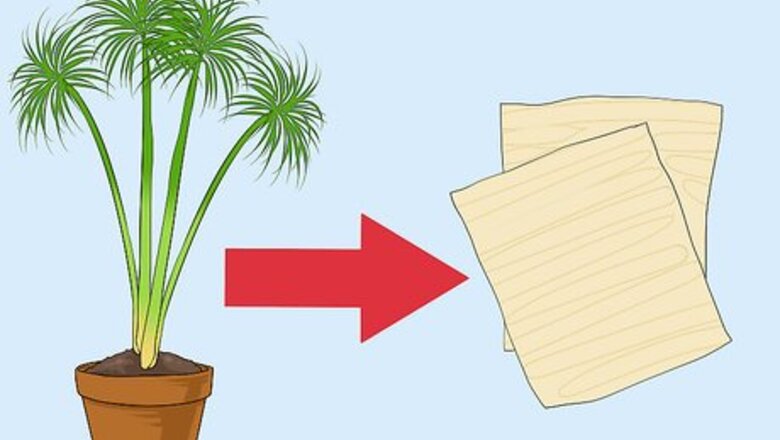
views
X
Research source
- Cut a papyrus plant into strips and soak the strips in water for 3 days.
- Place the strips on a hard surface and roll the excess water out with a rolling pin.
- Weave the strips together and stack layers of strips under wooden boards. Leave them for 3 days to flatten them.
- Place the layers or bundles under a heavy stone slab for 6 days to finish flattening the paper.
Cutting the Plant
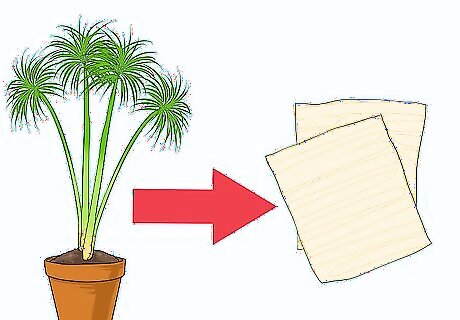
Obtain a papyrus plant. Papyrus paper is created from the Cyperus papyrus plant, which is a light but strong reed. You can buy them online or in nurseries. A nursery that specializes in papyrus would be your best bet, however. You can also make the paper out of wide grasses, like river reeds. Choose a papyrus plant with a strong, healthy stalk, as this is what you'll turn into paper.
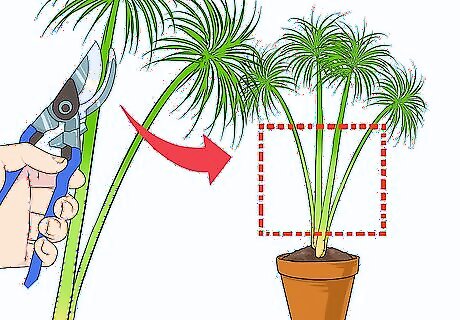
Cut the stalks. About 12 inches (30 cm) of papyrus plant will make a large piece of paper that will be nearly 24 inches (61 cm) in length. Cut off as many stalks as you will need to make the amount of paper you want. The cuts must be diagonally made. Then, cut the tips of the papyrus. You will not use the tips, which are the thinner, grass-like end of the plant. Use strong scissors or pruners.
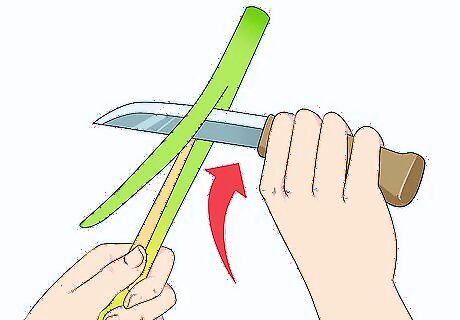
Peel away the outer layer of the papyrus plant. Only the inner part of the plant is used for the paper. You will need to remove the outer green part of the plant. Use a sharp knife and slice down the length of the plant until the entire outer layer is removed. The inside of the plant should be a white or slightly greenish color. You can also use scissors if you don't have a sharp knife available. Have someone help you with the peeling process if you are uncomfortable with using a sharp knife for slicing.
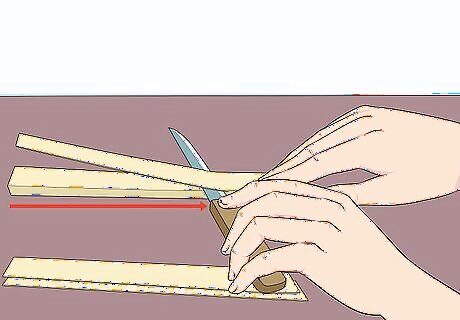
Cut up the inner portion into strips. Use the knife you used to cut off the outer portion to cut the inner layers of the papyrus plant (pith) into thin strips. Hold the plant in your hand and cut towards you vertically. Make sure that all of the strips have the same size and thickness. The best strips typically come from the center of the plant. The lowest quality comes from the outermost layers. It is also an option to cut away from your body if you don't feel comfortable cutting towards your body. You can cut the strips into smaller pieces if you want to make smaller sized paper.
Soaking & Weaving Strips
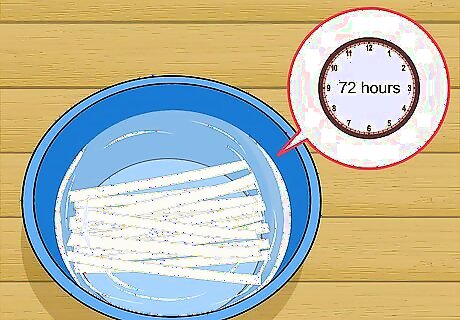
Place the papyrus plant strips in water. There are some natural glue-like chemicals within the plant that need to be released before you can turn it into papyrus. Let them soak in the water for at least 3 days. Try to lay them out flat in a tray of water to soak. Set the tray in a place where the water won't evaporate quickly. The strips should turn flexible and transparent.
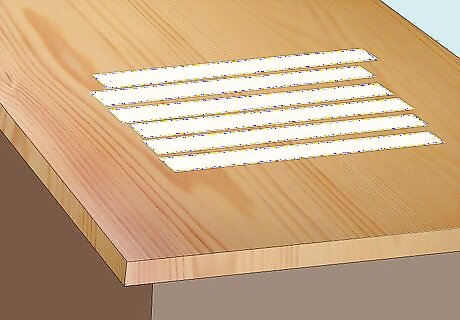
Lay the papyrus plant strips on a hard, flat surface. The pattern doesn't matter at this point as you will be rearranging them later. Just lay them out on a hard, flat surface and make sure they don't overlap. A smooth, non-tiled countertop or a sturdy table will work.
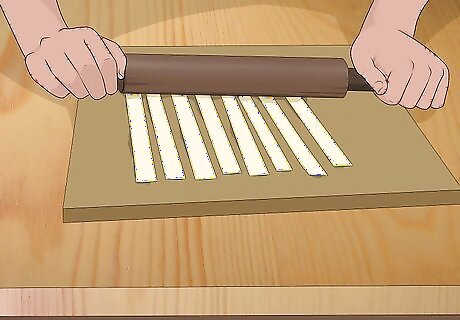
Roll the excess water and sugar out of the plant. Grab a rolling pin and use it to roll the strips flat. The rolling pin should be squeezing the water out of them and flattening the strips into sheets. In the past, papyrus strips were pounded with a hard object to remove the excess water.
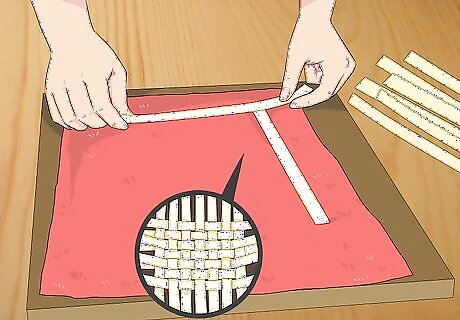
Weave the strips together. Lay the strips on the cloth. Get a dry sheet of linen cloth or felt. Then, begin to weave them together. You want to create 2 layers of strips, with the top layer strips being perpendicular to the bottom layer strips. It should resemble a placemat. The strips should slightly overlap one another to prevent the papyrus from falling apart later. Cover the papyrus strips with a second sheet of linen cloth once you have weaved them together.
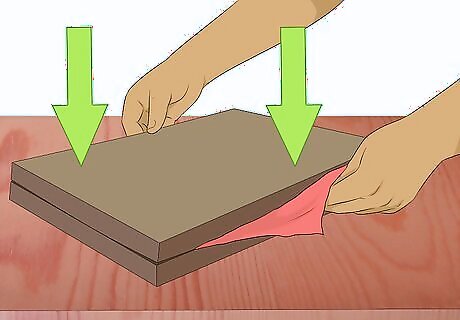
Place the bundle between 2 wooden boards. Make sure that the wooden boards are somewhat heavy. The pressure is necessary to flatten the papyrus strips together. Once the strips have been placed between the boards, press them together. Lay the sandwiched papyrus sheet on a flat surface and allow the wooden boards to flatten the sheet using gravity. You can put heavy books on top of the boards if the boards aren't very heavy.
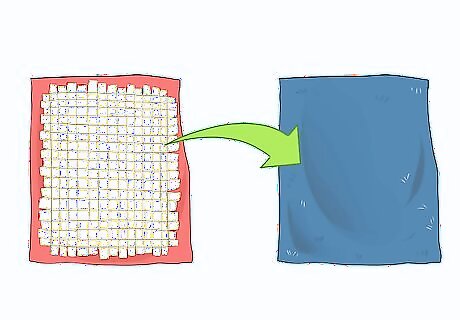
Replace the wet linen sheets with dry ones. You should do this every few hours. Be careful when removing the wet linen. Peel it off of the papyrus gently. The drying process should take approximately 72 hours.
Flattening the Paper
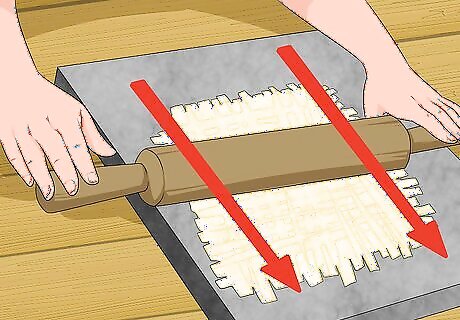
Flatten the sheet. The paper may not be completely flat after you remove it from the wooden boards. Put the paper under a stone slab for up to 6 days to make it completely flat. During this time, the sugars within the papyrus will fuse together. If you are pressed for time, you can use the rolling pin to flatten the paper.
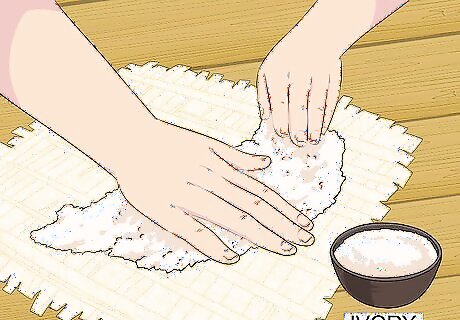
Polish the papyrus. This step isn't absolutely necessary, but it will make the papyrus look nicer and more finished. Use a shell or smooth piece of ivory. Any type of shell that is smooth and without ridges will do. Rub the shell or ivory over the sheet of paper until it appears to be shinier than it was. A smooth stone will work as well. Do not rub with too much force or you could rip the paper.
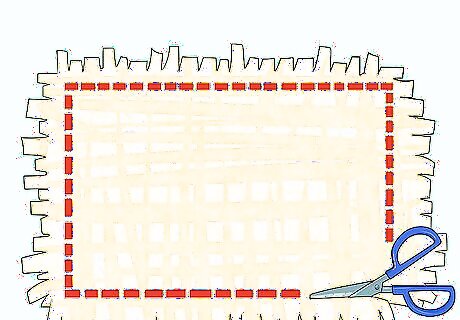
Cut the paper. The sheet may be larger than you want when it is finished. Use a razor, scissors, or paper cutter to cut the papyrus into smaller sheets. Measure the sizes you are cutting so you will have multiple sheets of the same size. You can make a notebook out of the sheets of paper you've just made.
Making Papyrus with Children
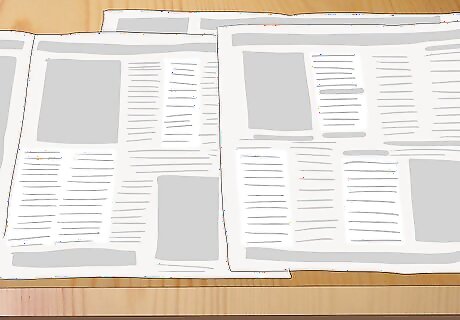
Cover the table surface with newspaper and paper towels. Use newspaper to cover the table or whatever surface you're planning to make the paper on. The process can get messy, especially with children. This will make cleaning up easier. Once the surface is covered, place a paper towel on top of the newspaper. The paper towel will be the base layer of the papyrus.
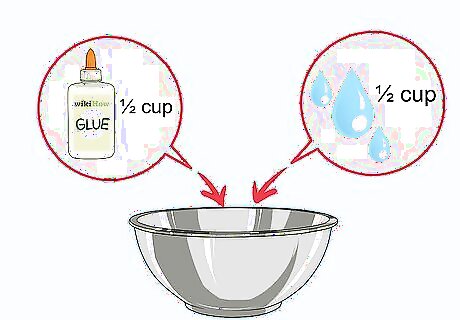
Mix glue and water into a bowl. Use ½ cup (120 mL) of glue. Any type of liquid white glue will work. Then, pour ½ cup (120 mL) of water in the bowl. Mix the contents with a spoon until a runny consistency is created. Pour 1 cup (240 mL) each glue and water if you plan on making 2 sheets of paper.
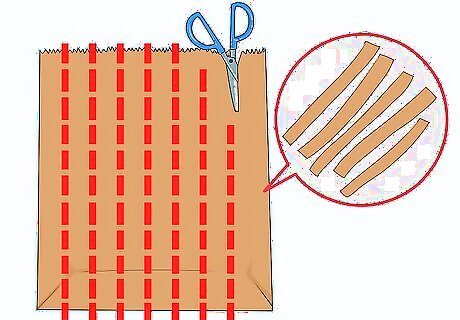
Tear paper bags into strips. You will need to use 2 brown paper lunch bags. Tear the bags into ⁄2 in (1.3 cm) wide strips, but the strips should be long. Tear the strips as long as you want the paper to be. You can use your hands to tear the strips, or cut them with scissors. You should use 4 brown paper bags if you plan to make 2 sheets of paper. Tearing the strips is better than cutting them because the ripped edges will fuse together better and give you a smoother surface.
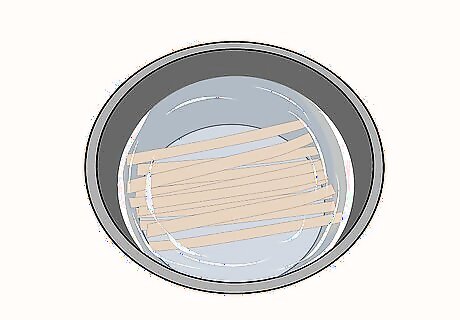
Dip the strips into the glue and water mixture. Dip each strip individually. Try to keep the strips as flat as possible when dipping them. Make sure the strips are fully soaked with the mixture. Run the strips between your index and middle fingers to remove any excess glue. Like with papier mâché, you want the strips to be saturated, but not dripping.
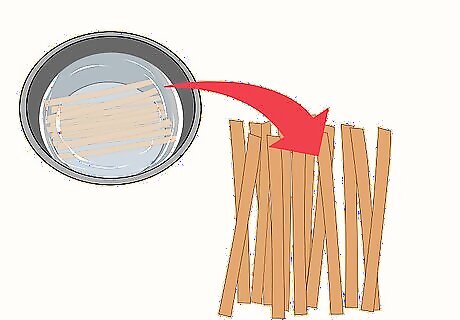
Lay the strips out vertically. After you dip each strip in the mixture, lay them next to each other on top of the paper towel. You should lay them out vertically. The strips should be slightly overlapping. Make sure that the top and bottom edges are aligned. You don't want them to be off-set or crooked.
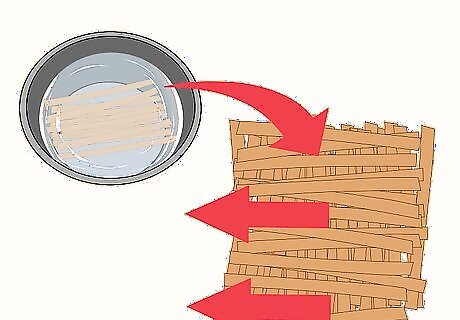
Lay the second half of the strips out. Once the first half off the strips have been laid out vertically, begin laying out the second half of the strips. Lay the strips out horizontally and on top of the vertical ones. For a more authentic look, you can weave the horizontal strips over and under the vertical ones, just like making a basket or woven rug.
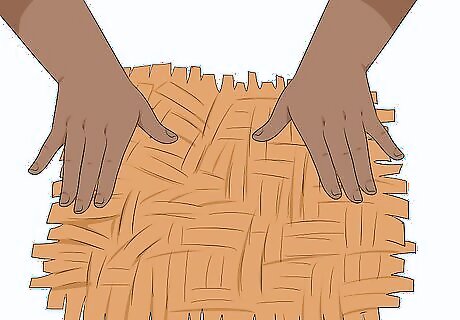
Smooth out the paper. Press the paper with your hands once all of the strips have been laid out. Smooth out any excess air or glue bubbles. Continue doing this until the paper is smooth and flat. Start in the middle of the paper and work your way outward towards the edges. Move your hands apart horizontally first, then vertically.
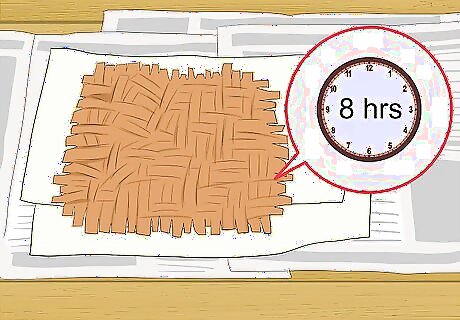
Allow the paper to dry. Keep the paper on top of the paper towel and newspaper while it dries. It should take about 8 hours to dry. Once it has dried, carefully peel the paper off of the newspaper. The paper towel will likely be stuck to the back of your papyrus, which is fine; it is in the back. If you are pressed for time, you can speed the process up with a hairdryer.




















Comments
0 comment